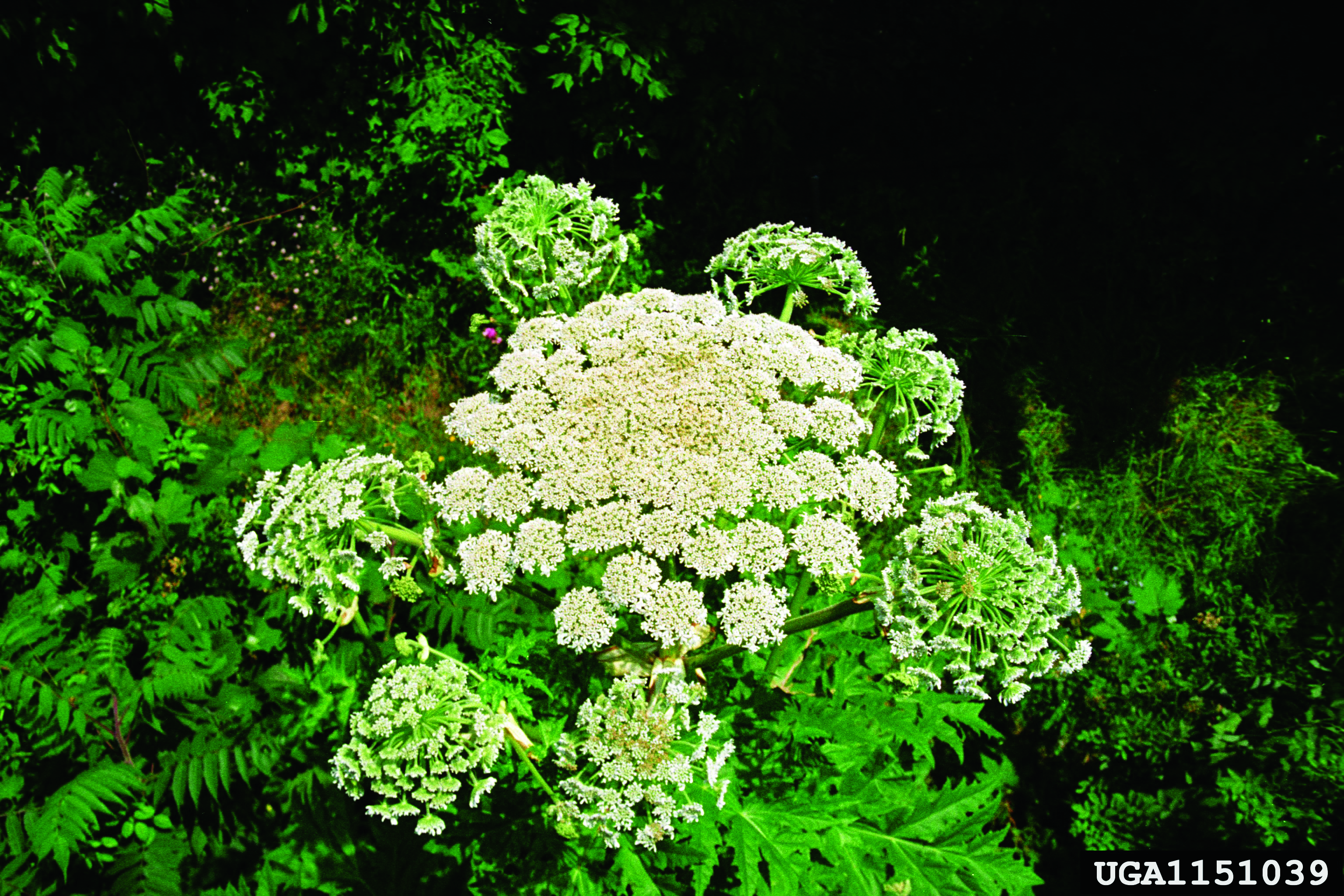Invasive Watch: Hogweed

Hogweed (heracleum) survives from one growing season to the next by forming perennating buds that go dormant during the winter months. The plant develops white flowers from late spring through mid-summer, which results in up to 100,000 half-inch long winged, flattened oval seeds by late summer. The seeds turn from green to brown and are often spread by animals, runoff or wind.
Seeds from this invasive weed can remain viable in the soil for up to a decade, even after the plant’s stems die in the fall.

Mature plants have white umbrella-shaped flower heads that can grow up to 2½ feet wide. Terry English, USDA APHIS PPQ, Bugwood.org

Mature plants have deeply incised compound leaves reaching up to 5 feet wide. Donna R. Ellis, University of Connecticut, Bugwood.org
In terms of appearance, hogweed is often compared with Queen Anne’s Lace (Daucus carota). Mature plants often possess the following features:
Hogweed stems are also 1 to 3 inches in diameter, with dark purplish blotches and raised nodules. Stems are usually covered with hairs, but not as prominently as leaf stalks, which also are spotted and hollow.
Hogweed stems, stalks, leaves and flowers can be controlled with TerraVue® herbicide from Corteva Agriscience. TerraVue herbicide may suppress certain established grasses, such as smooth bromegrass, when plants are stressed by adverse environmental conditions. Plants should recover with the onset of favorable environmental conditions and upon release from weed competition. Tall fescue, orchardgrass, timothy and annual ryegrass are tolerant of 2.85 oz per acre of TerraVue herbicide once plants have developed three collared leaves.
You can find more information regarding best practices for controlling incompatible vegetation throughout roadsides, utility rights-of-way and adjacent land at VegetationMgmt.com.
Under normal field conditions, TerraVue® is nonvolatile. TerraVue has no grazing or haying restrictions for any class of livestock, including lactating dairy cows, horses (including lactating mares) and meat animals prior to slaughter. Label precautions apply to forage treated with TerraVue and to manure and urine from animals that have consumed treated forage. TerraVue is not registered for sale or use in all states. Contact your state pesticide regulatory agency to determine if a product is registered for sale or use in your state. Consult the label for full details. Always read and follow label directions.
For over 30 years, Vistas® has covered strategies, trends and stories from across the Vegetation Management industry.